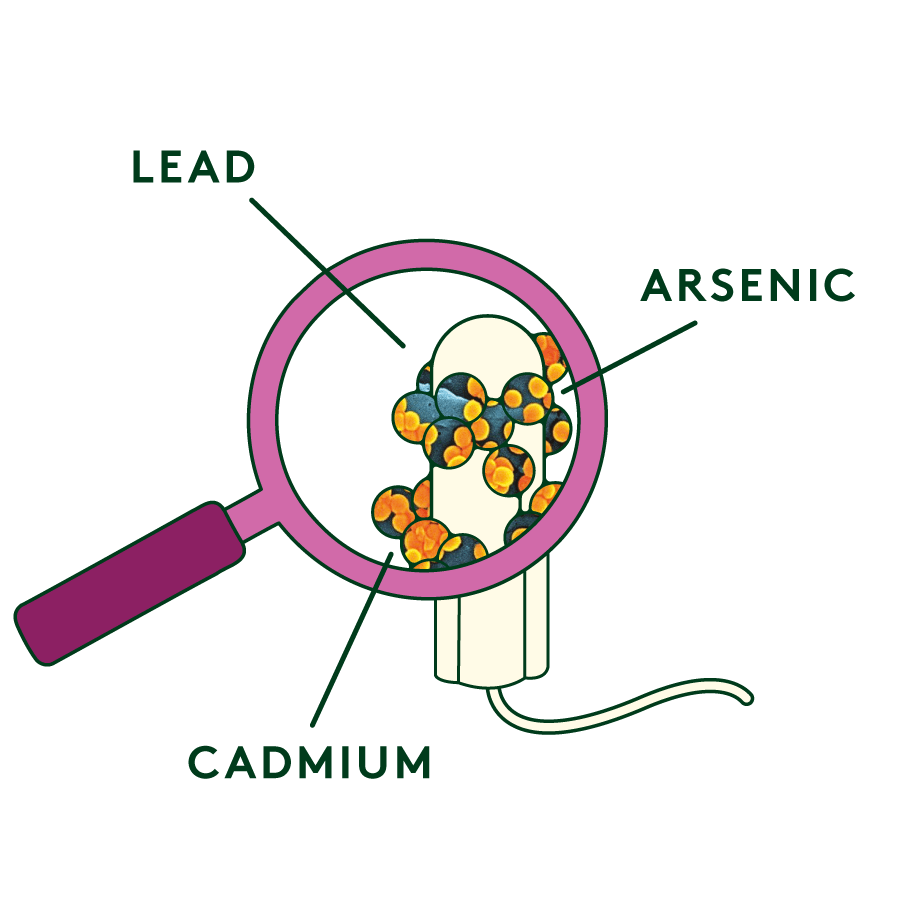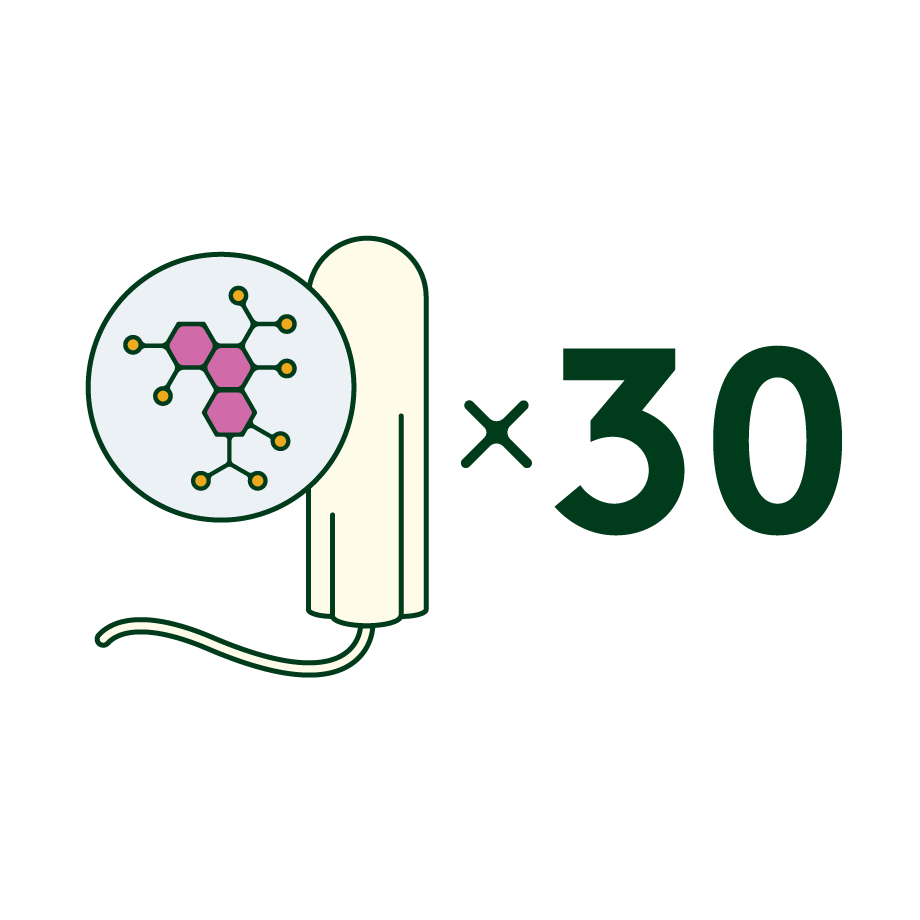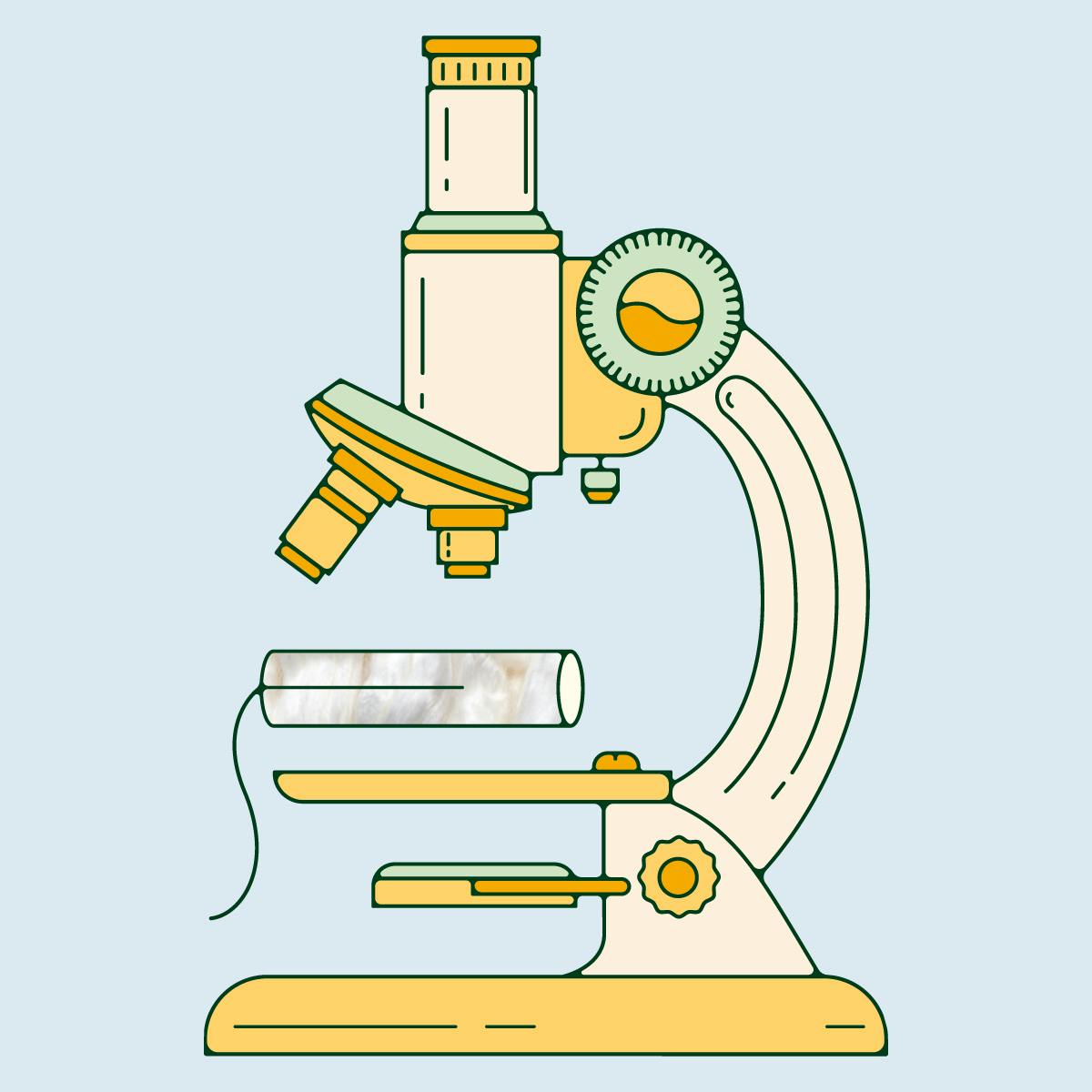Table of contents
1. The viral study: a quick overview
2. Breaking down the research limitations
3. The bigger picture: what we don't know about gynae health
4. Daye tampons: setting a new standard in period care
5. The bottom line
Written by Eleanor Riches
Medically reviewed by Sarah Montagu (RN DFSRH, BSc)
Illustrated by Maria Papazova
100% organic and zero-waste Tampons
Fully-sustainable organic tampons with a no-shed protective sleeve for feel-good period.

A recent study that found toxic metals in tampons went viral, sparking fear and frustration across social media. Tampons are intimate products used in our daily lives: we deserve to feel safe and confident using them. That’s why, at Daye, we’ve been rigorously testing our tampons since 2019. As tampon experts, we’re here to break down the viral study and explain why it isn’t a reason to panic - but it does raise some big questions about the state of gynae health today.
The viral study: a quick overview
Researchers tested 24 types of tampons from 14 brands, across a range of absorbencies. They tested for 16 different types of metals and metalloids. Arsenic, cadmium, and lead are the metals considered most toxic to human health - which is why it was alarming to discover that every tampon tested positive for these metals.

The authors claim tampon use could be a potential source of metal exposure, calling for further research to determine whether these metals can enter the bloodstream through the vagina.
The key point here is that we need more information, this study is just one small piece in a much larger puzzle. What’s more, the research has some serious limitations, meaning we should approach the results with caution.
Breaking down the research limitations
Scientific studies can be difficult to translate into useful information. Biomedical scientist, Dr Andrea Love, provides a detailed analysis of the findings and limitations of this study in her newsletter. We’ll give you a quick breakdown below.
In short, the study has 5 key limitations:
- Sample: a small sample doesn’t represent all tampons.
- Method: researchers failed to replicate real-life conditions.
- Data: the findings are inconsistent and lack important details.
- Context: metals occur naturally in our environment, including soil and water.
- Safety: even if we ignore the above points, the amount of metal found in tampons is well below safety limits.
Sample: small sample, big assumptions

The study tested 30 different tampons in total, testing each of them twice. This tiny sample can’t possibly represent the millions of tampons used worldwide each year. We need more tests and more robust data.
Method: testing was far from real-life conditions
Researchers took each tampon apart to analyze the absorbent core and non-woven outer cover individually, rather than testing the tampon as a whole.
Then, to test what ‘leaked’ from the materials, they soaked them in 70% nitric acid at a temperature of 350F (168C). That’s an environment approximately 2000 times more acidic than the vagina, which would have a pH of roughly 4.5 and a temperature of around 99F (37C).
In other words, the testing model was nowhere near representative of how we actually use tampons (you know, as a complete product, inside a human vagina).
Data: inconsistent results and questionable conclusions
The data in this study varies - a lot. Even the control measures (the ones that are supposed to provide a stable reference point) are completely inconsistent. This makes it incredibly difficult to spot any clear patterns or come to a meaningful conclusion.
Context: metals most likely came from our environment
The reality is, in modern life, chemicals and metals are everywhere. They’re in our soil and our water, meaning they’re in the materials we use for pretty much everything from food to clothing.
The most likely cause of the metals found in tampons is from the cotton in their fibers. Cotton is a plant and absorbs nutrients from the soil, including metals.

The problem is that this study didn’t specify where the cotton from each tampon was sourced, so we can’t know if certain areas or manufacturers are more susceptible to higher metal content. In fact, for legal reasons, the results refuse to even specify which tampons tested positive for which metals.
We need more information at every level.
Safety: we’re talking tiny, tiny amounts here
It’s important to note that heavy metals are a natural part of our environment and are safe in small amounts. They only become toxic in larger quantities, which is why regulatory bodies like the EU and FDA have safety limits on metal contents in food and drink.
Let’s focus on lead as an example. Researchers found an average of 120 nanograms of lead per gram of tampon material - that's 120 parts per BILLION. This is such a tiny amount, it would represent just 1 single second of time in 31.5 years!
The EU has a safety limit of 5,000 parts per billion for lead in food. That's 42 times higher than was found in tampons. Meanwhile, if you drank 2 liters of bottled water per day in the US, you could be safely consuming between 10 and 32 times the amount of lead found in a tampon.
The bottom line? Don’t worry. Based on the information we have, tampons are safe to use.
The bigger picture: what we don't know about gynae health
The more we delve into this study, the more it highlights just how much we don’t know.
We don’t know exactly how tampons impact our health.
We don’t know if or how these metals enter the bloodstream.
Because we don’t know enough about the vaginal ecosystem.
The historical exclusion of women from scientific research, combined with the stigma surrounding menstruation, means that we’re centuries behind where we should be in our understanding of the female reproductive system and essential items like tampons.
We deserve MORE: more research, more regulations, and higher standards in period care.
Daye tampons: setting a new standard in period care

Here at Daye, we’re all about transparency and safety. We invest heavily in research and development and are incredibly proud of the rigorous science behind Daye tampons.
We’ve been routinely testing our tampons since 2019, making the results publicly available on our website. We’re the only brand that regularly tests for heavy metals in all our products, at every stage of the supply chain.
We believe tampons deserve to be treated as medical devices. This means routine lab testing, production in clean, sterilised environments, sanitising the tampons, and controlling them via post-market surveillance.

Working closely with our expert medical board, made up of clinicians, researchers, and OBGYNs across the US, EU, and UK — we’re committed to conducting thorough research and raising the bar in gynae health.
The bottom line
Yes, this study is alarming at first glance - no, it’s not a reason to panic. However, it does open up important questions about how little we know about the science, safety, and regulations of period products. To support more research in gynae health and get peace of mind with high-quality period care, check out Daye tampons today.
100% organic and zero-waste Tampons
Fully-sustainable organic tampons with a no-shed protective sleeve for feel-good period.







